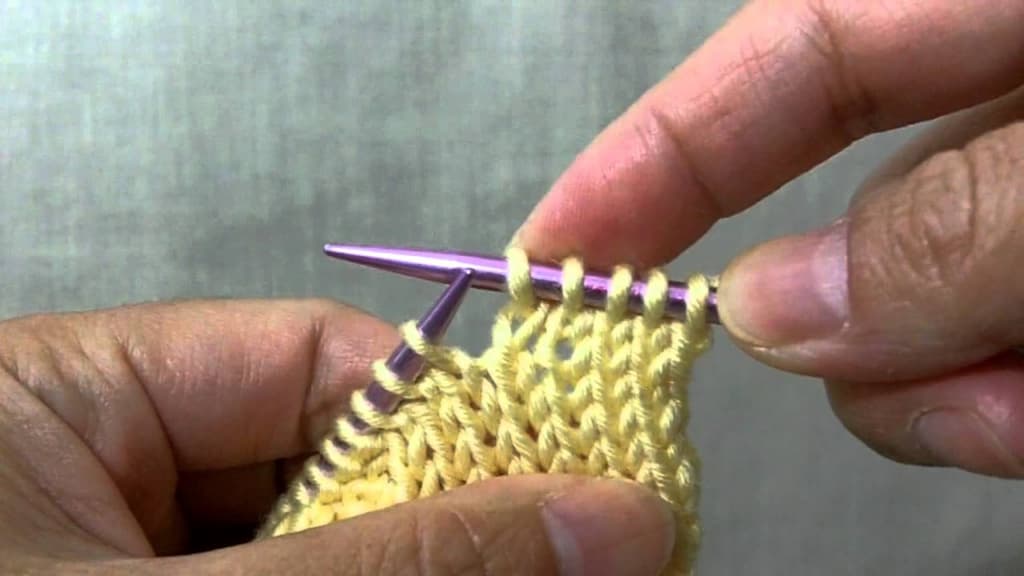The Knit Through the Back Loop (KTBL) technique offers a nuanced twist to the standard knit stitch. This method is particularly effective in adding intricate details and depth to knitting projects. The KTBL stitch is a popular choice for enhancing ribbing in various knitting patterns, providing an elevated three-dimensional appearance.
Enhancing Ribbing with KTBL
Employing the KTBL technique in ribbing, particularly in hat brims and borders, creates a distinctive look. This technique, when combined with purl stitches, offers a beautiful ribbed pattern. Although integrating KTBL in patterns like provisional cast-on may present slight challenges, the aesthetic payoff in terms of the ribbing’s structure and definition is significant.
The Process of KTBL Stitch
Knitting through the back loop involves a slight variation in the needle insertion compared to the standard knit stitch. Instead of entering the stitch from the front, the needle is inserted from the back, twisting the stitch and providing a unique texture when combined with purl stitches.
Visual Characteristics of KTBL
A stitch executed in KTBL resembles a regular knit stitch with a noticeable twist. This twist grants the stitch enhanced definition, making it appear more pronounced, especially when positioned next to purl stitches. This characteristic is why KTBL is favored for elements like hat brims, where a pronounced texture is desirable.
Step-by-Step Guide to KTBL
- Insertion: Place the right-hand needle into the back of the next stitch on the left-hand needle;
- Yarn Wrap: Wrap the working yarn around the needle;
- Completion: Pull the working yarn through to create the new KTBL stitch.
Twisted Rib Stitch Variations for Hat Patterns
The KTBL technique can be adapted into various twisted rib stitch patterns, enhancing the texture of knitted hats. Some commonly used variations include:
- 1X1 Rib: KTBL, P1 Repeat until the end of the row/round;
- 2X1 Rib: KTBL (twice), P1 Repeat until the end of the row/round;
- 2X2 Rib: KTBL (twice), P2 Repeat until the end of the row/round.
Video Guide
Comparative Table: Standard Knit Stitch vs. Knit Through the Back Loop (KTBL)
| Feature | Standard Knit Stitch | Knit Through the Back Loop (KTBL) |
|---|---|---|
| Texture and Appearance | Produces a smooth, flat stitch | Creates a twisted, more defined stitch |
| Complexity | Simple and straightforward | Slightly more complex due to the twist |
| Ideal Use | Standard knitting projects | Projects requiring texture and depth, like ribbing |
| Visibility in Fabric | Less prominent, blends into fabric | More noticeable, stands out in the fabric |
| Learning Curve | Suitable for beginners | Requires some practice, ideal for intermediate knitters |
| Flexibility | Provides basic texture | Adds elasticity and visual interest |
| Application | Used in basic patterns and garments | Preferred for decorative edges, like hat brims and cuffs |
Slip Back Technique: A Complementary Method in Knitting
Alongside the Knit Through the Back Loop (KTBL) technique, the slip-back method is another valuable skill for knitters looking to add diversity and texture to their projects. This section is dedicated to integrating the Slip Back method, providing an additional dimension to the intricacies of knitting techniques.
Characteristics of the Slip Back Method:
- Subtle Texture: The Slip Back technique adds a delicate, understated texture to the fabric, ideal for nuanced designs;
- Complementary to KTBL: It can be used in conjunction with KTBL to create varied textures within the same piece, offering a sophisticated look;
- Versatility in Application: This method is particularly effective in patterns requiring detail without the bulk, such as lightweight garments or intricate accessories.
Integrating Slip Back with KTBL:
- Combined Techniques: Use Slip Back in sections of your project where a subtler texture is desired, complementing the more defined twists of KTBL;
- Pattern Diversity: Incorporating both Slip Back and KTBL in a single project can add complexity and visual interest, especially in items like scarves, shawls, or sweaters;
- Skill Enhancement: Mastering both techniques will expand your knitting capabilities and enable you to tackle a wider range of patterns with confidence.
By blending the Slip Back method with KTBL, knitters can explore a broader spectrum of textures and techniques, enhancing the intricacy and appeal of their knitting projects. This combination can lead to the creation of unique, textually rich, and visually engaging knitwear.
Conclusion
The Knit Through the Back Loop technique is a valuable skill for knitters seeking to add depth and texture to their projects. Its application in ribbing and borders can significantly enhance the visual appeal of knitted items, particularly hats. By mastering KTBL, knitters can add a sophisticated touch to their creations.






